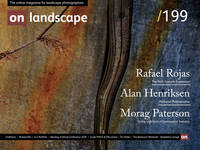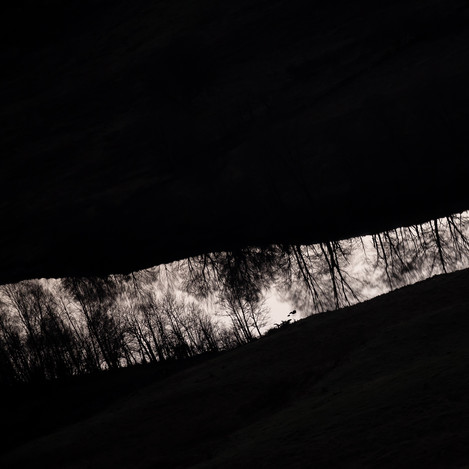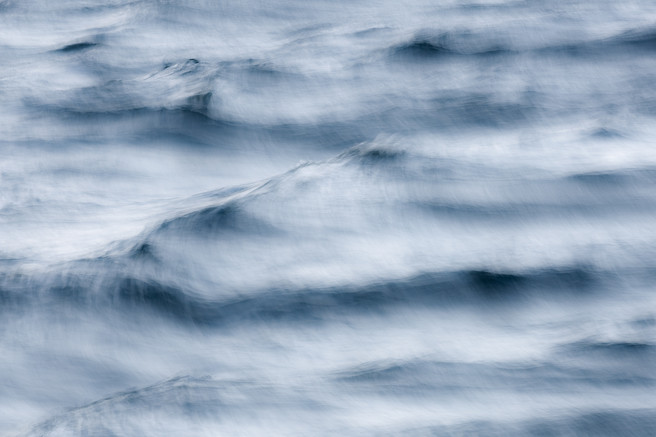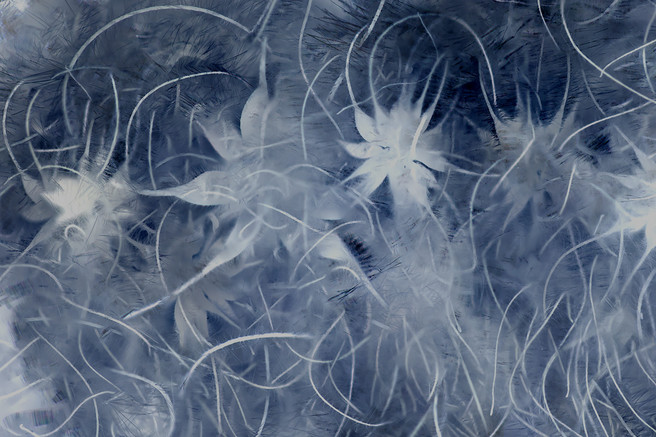The balance between being well equipped and sustainable

Morag Paterson
A sense of belonging underpins my photographic work, which varies from the wildly abstract to more literal representations of the natural world. For me, the art of photography is process-based, using the camera as a tool to express my engagement with any given location or subject.
Enjoying many camera-free hours roaming on the hillsides of the southern uplands in Scotland or the wooded slopes around our smallholding in the Alpes-Maritime helps build my mental scrapbook and incubate ideas.
In a world of built-in obsolescence and yearly upgrades and updates to our phones, computers, cameras, accessories and software it’s not easy to tread a comfortable line between being well equipped and up to date without biting off a much larger share of the world’s resources with each new purchase than is sustainable globally. (I think it’s a relatively widely accepted premise that companies drip feed their releases piecemeal to maximise consumer spend every step of the way; putting profit ahead of sustainability.)
Right from the outset, I want to be clear that my intention with this article is to stimulate debate and discussion, as opposed to preaching or lecturing and I’d very much like to hear other people’s thoughts and opinions on the subject in response.
In today's global photography community, the temptation of an extra few megapixels here, and a slightly sharper lens there, or any modicum of additional functionality is hard to avoid with gear chat being one of the core currencies of conversation among fellow 'togs, not to mention being bombarded by advertisements and gear-fest gatherings such as the Photography Show and Photokina etc. On the other hand, it could be argued that unless you’re regularly printing your photographs at a vast scale a lot of this technology is over-egging the pudding, or using a sledgehammer to crack a nut.
Partly stemming from the environmental projects Ted and I have been working on (and if I’m frank a degree of laziness on my part when it comes to researching and trying out new gear), combined with the <10% possibility of getting anything reliably delivered to our new house, over the last year or so we’ve been experimenting with “making do”. For example, I stupidly caught my filter holder on a balcony the previous year, meaning I lost my favourite filter and the holder. Initially, I didn’t replace it because I thought I would be able to get it back when I could return to the hotel and get access to the adjacent land, yet even when I realised this hope was fruitless I decided to try and get by with my other (admittedly numerous) accessories.* For a while, I was often caught lamenting the loss of my beloved 1.2 stop but as time went by I started experimenting with new techniques that would enable me to capture images I liked in a variety of circumstances where I would have quickly reverted to type given my usual kit. I’ve created work over the last year that I don’t think I could have imagined if it wasn’t for that moment of clumsiness. I play with exposure more than ever now, and often combine a series of images of a subject or theme over a month, or sometimes years before combining them into a single image or series.
As far as my camera body goes, I haven’t upgraded it for five and a half years now – it does pretty much everything I need it to. While the guys at Canon have generously loaned me other models to try over the years – that undoubtedly are better at certain things – at the moment I can’t see how I would justify buying a new DSLR. This is also, by the way, a great testament to buying a solid piece of kit that will go the distance and tolerate a high level of abuse. I feel the same about my rucksacks – one of which I’ve had for about 10 years now (an fstopgear Tilopa). It’s still my go-to pack and the one I would trust to keep my gear pretty much safe and dry come hell, high water, hail, snow or a gigantic wave (I’ve tried them all except hell so far). My phone is over five years old too and has seen a fair share of repairs during my scatterbrained custodianship. Technical outdoor clothing is becoming increasingly easier to maintain (or acquire second-hand), with many of the outdoor companies offering repair services, although I’d be really grateful if someone could point me in the direction of a pair of trail running shoes that last more than six months.
I’m not expecting it to be easy, and I imagine I’m still going to have to make the occasional second-hand purchase here and there (my tripod head is a daily annoyance I really need to get around to sorting) but it’s what I’m doing for now. For anyone else interested in going down this road I would recommend looking for refurbished/second-hand equipment from any number of big brand companies that sell 'pre-loved' equipment from their trade-in departments; I’ve used Wex Photographic before, but a quick search online throws up any number of options to consider. I’m also a keen eBay user for both buying and selling; it’s a great place to pick up a bargain. Whether you use a more prominent company or buy direct from the likes of eBay or gumtree, it goes without saying to do a little research on the vendor, see how many items they’ve sold overall in the case of eBay, and check out reviews and feedback wherever you are shopping online. In short, you can often pick up an extremely high-quality piece of kit at a much-reduced price.
Next, we plan to turn our attention to filing and internet usage – we’ve had the policy over the years of keeping all our shots, with three backups. Given that we’re probably switching to cloud-based storage, and that data centres require vast amounts of energy (not least due to the fans working to keep the machinery cool), I’m going to do my best to sort out the wheat from the chaff; while undoubtedly laborious, it will probably be quite liberating and uplifting to whittle things down that way. Likewise, browsing on the Internet has a footprint all to itself, and we’re looking at making our screen time more targeted and efficient to reduce the inevitable distractions that tend to pop up, ubiquitous to almost any online activity. I did an internet search(!) and found a graphic with some eye-opening comparisons that we should all be aware of.
On that note, my screen time is drawing to a close for today, it will be interesting to review how this has worked out at the end of the year. In the meantime, I’d love to hear other people’s stories, whether it’s solutions they’ve found, issues they struggle with, or contrasting opinions.
*Honesty fact check! Ted has reminded me that I did buy a really terrible cheap replacement holder from eBay. I hate it.










